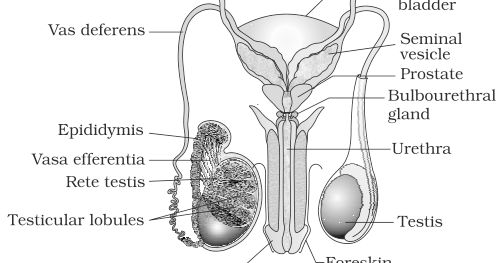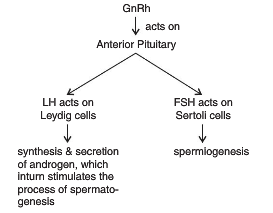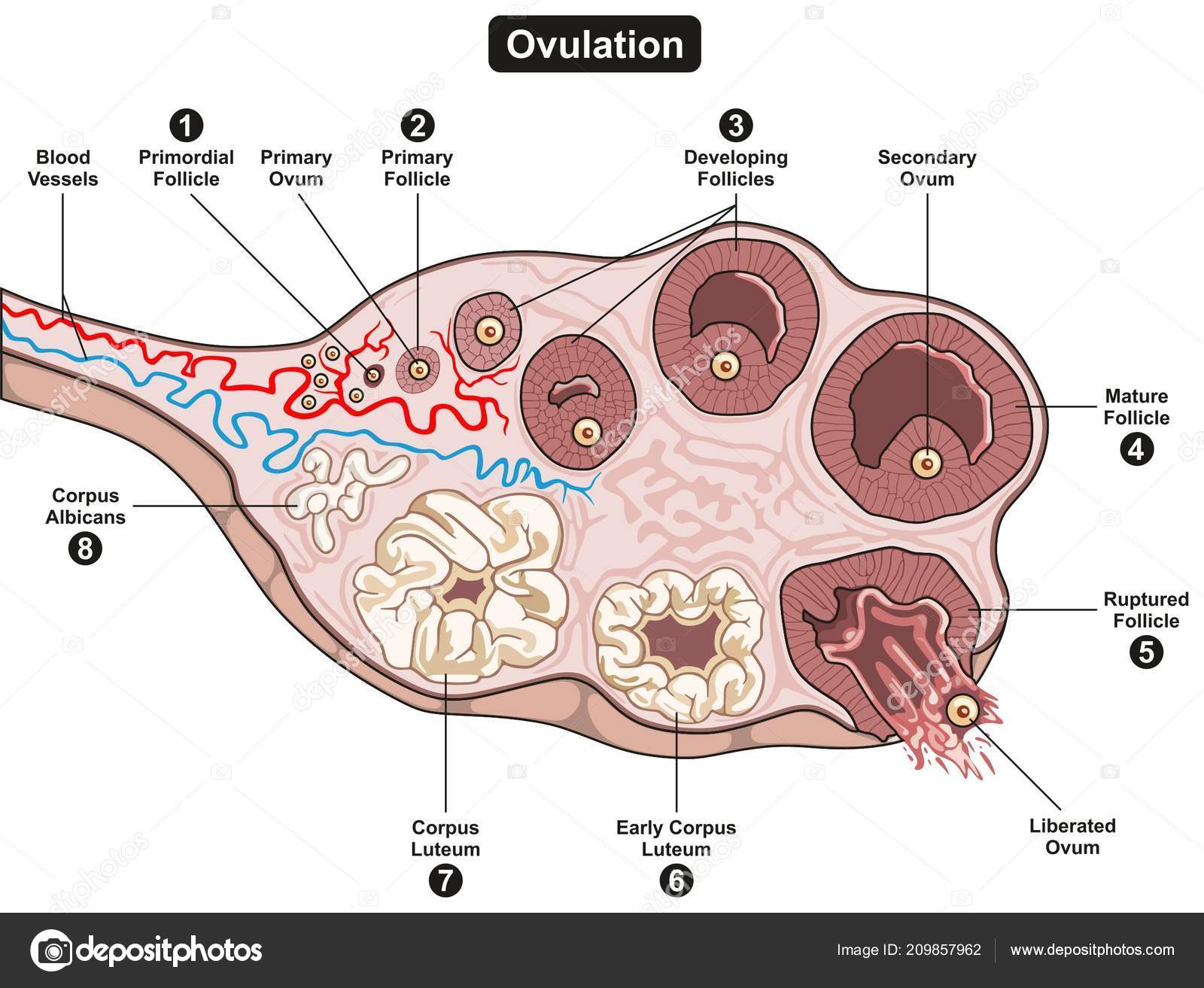CHAPTER 4
REPRODUCTIVE HEALTH
WHO - WORLD HEALTH ORGANISATION definition
Health: Health is a total well-being in all aspects
of reproduction, i.e., physical, emotional, behavioral & social; and not
merely the absence of disease or infirmity.
Reproductive health is defined as a state of physical, mental, and social well-being in all matters relating to the reproductive system, at all stages of life; and not merely the absence of disease or infirmity.
Reproductive health is defined as a state of physical, mental, and social well-being in all matters relating to the reproductive system, at all stages of life; and not merely the absence of disease or infirmity.
Reproductive health addresses the reproductive processes,
functions and system at all stages of life. It, therefore, implies that people
are able to have a responsible, satisfying and safe sex life and that they have
the capability to reproduce and the freedom to decide if, when and how often to
do so.
Reproductive Health;
Importance:
Reproductive health is a crucial part of
general health and a central feature of human development. It is a reflection of health during
childhood, and crucial during adolescence and adulthood, sets the stage for health
beyond the reproductive years for both women and men, and affects the health of
the next generation. The health of the
newborn is largely a function of the mother's health and nutrition status and
of her access to health care.
Factors affecting
reproductive health
Reproductive Health–
problems and strategy:
India
was among the 1st countries to initiate actions & plans to attain total
reproductive health as social goal.
These programmes are called as ‘FAMILY PLANNING’
Improved programmes currently in operation have a popular
name ‘Reproductive & Child Health Care Programmes’ (RCH). Launched in 1977.
Sexual and Reproductive Health Awareness Day is held
annually on February 12.
Problems:
·
Lack of awareness and readiness to discuss sex
related issues
·
Myths and misconceptions related to sex
·
Early marriages and lack of prenatal and post
natal care, leading to high maternal mortality
·
Unwanted or mistimed pregnancies
·
Prevalence of sexually transmitted diseases and
reproductive tract infections
·
Population explosion
·
Illegal abortion of female fetuses
·
Congenital or acquired infertility
Aims of Reproductive
Health Programme
·
To create awareness about various aspects of and
related to reproduction
·
To educate adolescents regarding the
significance of reproductive health, making the right choices and providing a
healthy understanding of the sex related issues.
·
To lower the incidences of sexually transmitted
diseases, and reproductive tract infections, by creating awareness regarding
the significance of safe and hygienic sexual practices and proper care of
reproductive organs.
·
To address issues of fertility, ensure
counseling and guidance to couples incapable of bearing children. Development
of assisted reproductive technologies (ARTs).
·
To educate regarding the importance of prenatal,
and post natal care of mother and child.
·
To make people aware of legal issues related to
reproductive process and technologies such as female foeticide and
amniocentesis.
·
To develop technology for faster dissemination
of knowledge and use of audio visual methods for developing a better
understanding.
HOW HAS THE GOVERNMENT TAKEN MEASURES?
·
The use of audio-visuals & print media to
create awareness
·
Parents, family members, close relations,
teachers and friends are involved in the awareness programmes.
·
Introduction of Sex education in schools. Young
students are most vulnerable to misconceptions and hence it was considered
important to introduce sex education to them.
·
Proper information about reproductive organs,
adolescence and related physiological changes, safe & hygienic sexual
practices, sexually transmitted diseases, AIDS etc.
·
Educating fertile couples, especially those of
marriageable age group about available birth control options, proper care of
pregnant mothers, pre and post natal care, importance of breast feeding etc.
·
Development of understanding of male and female
physiology, their respective social and biological roles an in the light of
this information; development of gender equality.
·
Awareness of problems related to population
explosion, both at family and society level. Importance of small family, and
limited resources.
·
Awareness of social evils and sex related
crimes. Educating children to identify, and understand as well as protect
themselves from these evils.
·
Development of infrastructure, technology and
medical expertise to help people in need.
·
Research on reproduction related areas, to develop
new method and improve existing methods.
·
Statutory ban on amniocentesis, massive child
immunization programme etc.
·
Legalisation of MTP (medical termination of
pregnancy) in 1971, to control population size by check unwanted pregnancies.
Overall development goal of measures taken by government is
building up of a socially responsible and healthy society.
Amniocentesis
A fetal sex determination test based on the chromosomal
pattern in the amniotic fluid surrounding the developing embryo.
It is used to find out chromosomal abnormalities in developing embryo by using amniotic fluid.
It is also illegally used for foetal sex determination and hence a statutory ban on amniocentesis has been placed to check female foeticide.
It is used to find out chromosomal abnormalities in developing embryo by using amniotic fluid.
It is also illegally used for foetal sex determination and hence a statutory ban on amniocentesis has been placed to check female foeticide.
Indicators of
Reproductive Health
·
Awareness of sex and reproduction related
matters
·
Higher number of medically assisted deliveries
·
Better pre and post natal care, indicated by
lower maternal and infant mortality
·
Smaller families with more couples opting for
family planning programmes
·
Early detection and timely cure of STDs and
other sex related problems
·
Higher number of ARTs, reducing problems of infertility
Population explosion & Birth control:
Scientific study of human
population: Demography
World population (1900):
2 billion India’s
Population (1947): 350 million
World Population (2001): 6
billion India’s
Population (2000): 1b
v India is the
second most populous country in the world
v India’s
population reached 1 billion on 11 may, 2000
Population Index:
Ø
Birth
Rate (Natality rate): Natality rate is the rate
at which new individuals are added to a particular population by reproduction
(birth of young ones or hatching of eggs or germination of seeds/spores). It is generally expressed as number of births per
1,000 individuals of a population per year.
Ø
Death
rate (Mortality rate): Mortality rate is the rate at which the
individuals die or get killed. It is the opposite of natality rate. Mortality rate is generally expressed as number of
deaths per 1,000 individuals of a population per year.
Ø
Vital Index: The percentage ratio of natality
over mortality expressed in percentage is called Vital index.
Vital
index determines the normal rate of growth of a population.
Ø Growth
Rate: The "population growth rate"
is the rate at which the number of
individuals in a population increases in a given time period. It is expressed as a fraction of
the initial population.
Ø Total
fertility rate (TFR): TFR is defined as the average number of children that would
be born to a woman in her lifetime if the age specific birth rates remain
constant. The value of TFR varies from 1.9 in developed nations to 4.7 in
developing nations.
Population Explosion is defined as the condition of having more people than can live
on the earth in comfort, happiness and health and still leave the world a fit
place for future generations.
Causes of Population Explosion
·
Increased food production and distribution
·
Improvement in public health due to better
sanitation, and cleaner water
·
Improvement in medical technology leading to
conquest of diseases though early detection, better health practices, new
medicines, vaccinations etc.
These factors have resulted
in:
·
Decline in death rate
·
Decline in MMR (maternal mortality rate)
·
Decline in IMR (infant mortality rate)
·
Increase in number of people in reproductive age
According to the Census of 2001- 2011, India's population has grown at 17.7 per cent as against 21.5 per cent in the decade. At this rate it will double in next 33 years. This would lead to scarcity of basic requirements for life; food, shelter and clothing. Hence the government has been forced to take significant measures for population control.
Methods to Control population:
Ø Education
Ø Raising
age of marriage
Ø Family
Planning methods
Steps Taken to execute the above:
·
Targeting an increase in literacy rate
·
Involving social organizations to make
family planning programme a people’s programme
·
Providing education and employment
opportunities to women
·
Proper implementation of community
health programme
·
Incentives to people undergoing
sterilization
·
Providing birth control facilities to
individuals
CONTRACEPTIVE METHODS:
Through media – HUM DO HAMARE DO!!!!! (WE 2, OUR 2)
SAHELI - it is a contraceptive method developed by
scientists in CDRI - Central Drug Research Institute.
Contraceptive Methods:
Natural Methods
Barriers
I U D
Oral contraceptives
Injectable implants
Surgical Methods
1. Natural Methods:
Avoids meeting of sperm & ovum.
Periodic Abstinence - Avoid coitus from day 10
– 17 of menstrual cycle when ovulation is expected. Because chances of
fertility is very high during this period, hence known as fertile period.
Withdrawal or coitus interuptus - Male partner
withdraws his penis from vagina before ejaculation avoiding insemination of
sperms
Lactational amenorrhea-Absence of menstrual cycle
during first six months of intense lactational period.
2. Barrier Methods:
Condoms - Thin rubber used to cover penis in male or vagina
& cervix in females.
Diaphragms, Cervical caps & vaults are all barriers for
females to cover cervix during coitus.
Advantages of barrier methods:
1. They are disposable.
2. They can be self –inserted.
3. They are reusable.
4. Prevents conception by blocking entry of sperm thru cervix.
3. Intra uterine devices (IUD’S):
Devices inserted by doctors or nurses in uterus
thru vagina.
Examples. Cu T, Cu7, Multiload 375, Lippes loop.
Cu ions released suppress sperm motility & fertilizing
capacity of sperms.
Hormone releasing IUDs makes the uterus unsuitable for
implantation & cervix hostile to the sperm.
4. Oral pills:
Pills are taken daily for 21 days.
They are very effective with less side effects.
Saheli - new oral contraceptive contains a non-steroidal
preparation.
It is a ‘once a week ‘pill with high contraceptive value.
Injection or implantation of progesterone /estrogen under
the skin.
5. Surgical method:
This method is also called as STERILISATION.
It is advisable for male/female partner as a terminal method
to prevent any more pregnancies.
In male, they’re called vasectomy, where the vas deferens is
cut or tied.
In female, it is called tubectomy, where a small part of the
fallopian tube is cut or tied up.
This method is highly effective but their reversibility is
very poor.
Side effects of contraceptive method:
• It is very important that the selection of contraceptive method should be taken under the consultation of the doctors.
• However, their possible ill-effects like nausea, abdominal pain, breakthrough bleeding, irregular menstrual bleeding or even breast cancer.
• These symptoms SHOULD NOT BE TOTALLY IGNORED.
What is MTP?
Intentional or voluntary termination of pregnancy before full term is called Medical Termination of Pregnancy (MTP) or Induced Abortion.
Why MTP?
MTP is done to get rid of unwanted pregnancies due to casual
unprotected intercourse or failure of the contraceptive used during coitus or
rape.
MTPs are also essential in certain cases where continuation
in pregnancy could be harmful or even fatal to the mother or to the foetus or
both.
Sexually transmitted diseases ( STDs)
Diseases or infections which are transmitted sexually through sexual intercourse are called as Sexually Transmitted Diseases (STDs) or Venereal Diseases (VDs) or reproductive tract infections. STDs can be classified as viral, bacterial, protozoan, fungal, etc.
HOW ARE STDS CAUSED?
Depending on the disease, STDs can be spread with any type of sexual activity. STDs are most often caused by viruses and bacteria.
Various types of Sexually Transmitted Diseases:
The various types of sexually transmitted diseases include gonorrhoea, syphilis, genital herpes, chancroid and of course the most common HIV leading to AIDS.
Chlamydiasis
Chlamydiasis is a sexually transmitted disease in humans
caused by the bacterium Chlamydia trachomatis. Chlamydiasis is a major
infectious cause of human genetial and eye diseases.
Chlamydiasis was once the most important cause of blindness.
the infection can spread from eye to eye by fingers, shared towels, eye seeking
flies, and cloths etc.
Prevention
STDs are a major threat to a healthy society. Therefore early detection or prevention and cure of these Diseases are given prime consideration under Reproductive health-care programmes though all person are vulnerable to these infections, their incidences are reported to be very high among the age group of 15-24years.these infections can be prevented by following a few simple rules which include:
Avoid sex with unknown partners or multiple partners
Always use condoms during coitus
In case of doubt, go to a qualified doctor for early
detection and get complete treatment if diagnosed with disease.
INFERTILITY
A large no of couples all over India are infertile, i.e., they are unable to produce children in spite of Unprotected sexual co-habitation. The reasons for this could be many-physical, congenital, diseases, drugs, Immunological or even Psychological.
Assisted Reproductive Technologies (ART) are special techniques that assist couples to have children.
VARIOUS TYPES OF ASSISTED REPRODUCTIVE TECHNOLOGIES ( ART)INCLUDE:
· In-vitro fertilisation (IVF)
· Zygote intra fallopian transfer (ZIFT)
· Intra cytoplasmic sperm injection(ICSI)
· Gamete intra fallopian transfer(GIFT)
· Artifical insemination (AI)
1) In Vitro Fertilization (IVF)
It is the fertilization outside the body in almost similar conditions as that in the body. In this method, popularly known as test tube baby programme, ova from the wife / donor (female) and sperms from the husband / donor (male) are collected and are induced to form the zygote under simulated conditions in the lab. The zygote or early embryos could then be transferred into the fallopian tube (ZIFT -zygote intra fallopian transfer)
2) Zygote intra fallopian transfer (ZIFT)
The zygote with 8 blastomeres can be transferred into the fallopian tube.
3) Intra cytoplasmic sperm injection (ICSI)
Intra cytoplasmic sperm injection (ICSI) is another specialized procedure to form an embryo in the lab in which a sperm is directly injected into the ovum.
4) Gamete intra fallopian tube (GIFT)
Transfer of an ovum collected from a donor into the fallopian tube of another female who cannot produce one, but can provide suitable environment for fertilisation and further development is another method attempted.
5) Artificial Insemination (AI)
Infertility cases either due to inability of the male partner to inseminate the female or due to very low sperms counts in the ejaculates could be corrected by artificial insemination.
In the technique, the semen collected either from the husband or a healthy donor is artificially introduced into the vagina or into the uterus (IUI - Intra Uterine Insemination) of the female.
6) Adoption – can be done from orphanage / relatives.
Counseling and information on infertility
It is important to involve both partners in all aspects of management. Discussions of wishes, plans, beliefs and motives are important.





